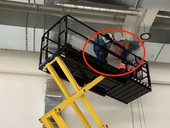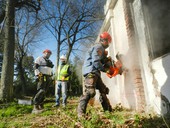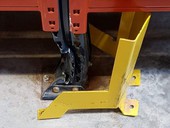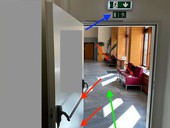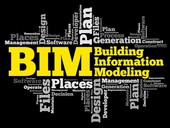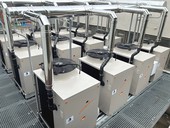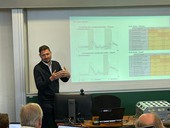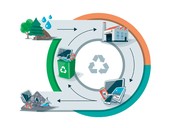The article focuses on the safe operation of Mobile Elevating Work Platforms (MEWPs) in compliance with current Czech legislation and technical standards. It highlights common mistakes observed in practice, the responsibilities of operators and employers, requirements for documentation, inspections, and operator training. Special attention is given to the use of personal fall protection equipment, the platform work system, and legal obligations under Act No. 250/2021 Coll., Government Decree No. 193/2022 Coll., Government Decree No. 362/2005 Coll., and EN 280. The text provides practical recommendations to ensure workplace safety and legal compliance for MEWP operators.
Archiv článků od 2.4.2024 do 13.10.2025
In this two-part series, we focus on the advanced standard for communication between automation devices in buildings. The previous part described the supported networks and object model. This second and final part describes the service system and tools for ensuring the interoperability of devices from different manufacturers.
Building Automation and Control network (BACnet) is network protocol specifically designed for automation and control of technologies in buildings. Typical applications include heating, ventilation, air conditioning, lighting, access control and fire detection. It provides standardized framework for organizing and sharing information between networked control devices [1, 2]. Interoperability is provided through object model of information items and their properties and associated services. Flexibility is provided by a range of supported networking options from serial line to Ethernet and internet connection. However, BACnet does not guarantee interchangeability of products from various vendors and every controller or other product may require vendor-specific programming and configuration tools.
Pre-demolition audits help identify materials suitable for reuse or recycling, thereby reducing the volume of construction and demolition waste and supporting the principles of the circular economy. The article presents the legal framework, audit methodology, and the environmental and economic benefits of such audits. It also includes current insights and practical examples from the European project CIRC-BOOST (Horizon Europe), which tests and implements circular solutions in construction through pilot projects in five countries.
The article “Safety of Rack Systems in Warehouses” deals with key aspects of safety when using rack systems in warehouses. It emphasizes the importance of regular inspections and maintenance of rack structures to prevent accidents and injuries. Furthermore, it addresses legislative requirements and standards that must be followed to ensure the safety of workers and stored materials. The article also provides practical advice and recommendations for the proper use of rack systems, including correct loading and organization of stored items.
This article addresses a crucial aspect of fire safety in buildings – the accessibility and unobstructed condition of escape routes. Based on real-world examples, it highlights severe deficiencies such as incorrectly mounted fire doors, missing door closers, and the placement of combustible furniture in protected escape routes. The text explains the applicable legal and technical requirements (e.g., Decrees No. 23/2008 Coll., 202/1999 Coll., Government Regulation No. 101/2005 Coll., and ČSN 73 0835) and provides practical recommendations for facility managers, building administrators, and fire safety professionals. The aim is to reduce evacuation risks and ensure compliance with fire safety legislation.
Creating a good BIM model is a long and challenging process for HVAC designers. Various plugins (addons) for BIM programs are currently being developed and upgraded to try to make designers work easier and eliminate duplication of effort. This paper examines the design of a buildings drainage system in Autodesk Revit BIM program, which has been extended with the MagiCad 2024 plugin.
This article presents a simulation analysis conducted at the Institute of Environmental Engineering at CTU, as part of the international exercise IEA EBC Annex 82. The aim of the joint exercise, which involved more than ten international research teams from different sectors, was to test and compare different approaches towards achieving energy flexibility in buildings on the basis of a unified exercise assignment. The Czech team based its study on a comprehensive simulation of the energy behaviour of buildings, including a detailed numerical model of the heating, hot water preparation, cooling and ventilation systems. The model was used to study the building potential for providing energy flexibility and future responsibilities of building operators in the context of smart energy grids.
This paper focuses on fire safety solutions for warehouses according to ČSN 73 0845. For comparison, the requirements set by the legislation in Portugal and Canada are analysed, as well as the requirements set by the NFPA (The National Fire Protection Association). The different approaches are compared and the most important differences are mentioned, especially in relation to current trends in warehousing. Finally, a software tool created in the Python programming language called “Warehouse Operations Group” is introduced. This tool is used to classify the fire compartment of a warehouse into a group of warehouse operations according to the method set out in Annex A of ČSN 73 0845. The process of determination simplifies and eliminates any errors that may enter into the calculation.
The article focuses on the importance of regular inspections and maintenance of smaller steel structures, such as roof walkways, fire escape stairs, or railings, from the perspective of applicable legal regulations and technical standards. It highlights the key requirements of ČSN 73 2604 and other legislative measures that ensure the safety and long-term reliability of these structures. The text also provides practical advice on inspection procedures, inspection frequency, and inspector qualifications. This article serves as a valuable guide for property owners and professionals in occupational health and safety (OHS) and facility management.
Ensuring the functionality of escape routes is essential for the fire safety of buildings and the protection of the health and lives of people, animals, and property. The article discusses types of escape routes, fire safety standards, construction design, ventilation, and appropriate doors for escape routes. It emphasizes the importance of regular maintenance and inspection to safeguard lives and property.
Whether we perceive it positively or not, the young generation is starting to gradually integrate into the work process. It is starting to form an integral part of our work teams. However, the young generation of co-workers is different from us, the older ones. What options do we have to understand this generation and find a "common language"?How to raise her potential, which will undoubtedly benefit the team as a whole?How to create and lead an effectively functioning work team in which different age groups are represented?
The preserved detailed data on the consumption of fuel (coke) for heating and hot water preparation in functionalist apartment building from the 1930s led to the idea to compare the energy consumption of these buildings at the time of their construction with the present day and to observe how the modernization interventions in both the heating system and the actual construction of the building are manifested and to quantify these modernization interventions.
The contribution provides a comprehensive overview of the real estate market development in 2023, based on data from both the Czech Office for Surveying, Mapping, and Cadastre (ČÚZK) and public listings. It thoroughly analyzes the statistics of sold apartments and houses, the size of demand for apartments based on their layout, and the year-over-year changes in realized prices in the five largest cities of the Czech Republic. The second part of the article introduces an innovative tool for real estate price calculation from Valuo Technologies, widely utilized by over 2,000 professionals, including appraisers, experts, real estate agents, and mortgage specialists.
The article largely copies the fourth chapter of the book Transport infrastructure management in context, which was recently published by VŠLG o.p.s. in Přerov. The entire book captures the links between the construction of transport infrastructure, its management and traffic operations in a unique way. All mentioned pillars of the book are described in an economic context with a focus on many information contexts.
By digitizing and automating processes throughout the building life cycle, the goal is to optimize the use of information so that it can be easily used either to reduce waste from buildings (waste prevention) or to have sufficient information about the materials and products used in the building at the end of its life cycle or as part of various renovations or retrofits. At the same time, improving the planning and management of the waste generated is a key effort. The paper presents the results of the European RECONMATIC project in this area, which progressively links information efficiency approaches with BIM processes. As such, the project has a broader focus and represents a paradigm shift in the management of C&D materials, from the traditionally conservative approach to C&D waste, to a similarly conservative approach of the construction industry, to construction production that seeks to achieve high waste recovery rates, and to the adoption of a responsive approach to waste recovery. The technologies to be used in this project (creating and working with a digital twin of the building, blockchain-based applications, precision prefabrication, efficient sorting through automation and robotics, etc.) are part of the themes that the project focuses on.
The article thoroughly describes the role of a corporate ecologist in complying with environmental regulations within businesses. In addition to traditional areas such as waste management, packaging materials, chemicals, and accident prevention, it now focuses on ESG reporting. It emphasizes trends towards sustainable waste management and the circular economy. The text analyzes strategies for waste prevention, trends, and innovations in their processing. Finally, it highlights the importance of education and awareness in this field.
IT systems in companies are often incompatible and their data communication is very complicated. A unified, integrated operating environment ensures real online communication not only of technological devices, but also technology for quality monitoring, systems for order planning, service and maintenance, as well as energy management.
zpět na aktuální články
